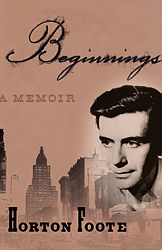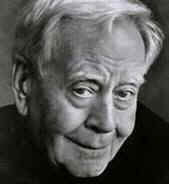

Horton Foote
Screenwriter
To Kill A Mockingbird
The challenge of taking a novel and translating it into film falls to the work of the screenwriter. The screenwriter for To Kill A Mockingbird was Horton Foote, a Southerner, who related very well to novelist Harper Lee‘s world. In the film world taking a novel and transposing into a film is known as “adaptation.”
”In To Kill A Mockingbird Foote recreates the tragic story of a small southern town where racism is inflamed by poverty and social ignorance. Mockingbird is not content merely to report the violence of Bob Ewell and the unjust conviction of Tom Robinson, however. Its political subject is integrated into Scout’s narrative of growing up female in the South. Foote emphasizes that Mockingbird is a memory play in which Scout recalls her search for a consciousness that will for her tomboy assertiveness and the creativity which produces her story. This search, she remembers, was made especially difficult because her white surrogate mothers were too fastidious and Cal -her source of order and morality—was a black woman.
To Kill A Mockingbird studies and celebrates Scout’s return to her past for strength and inspiration. Despite the death of her mother, her brother’s restraints on her freedom, and her father’s adult remoteness, the narrator survives and flourishes. As she remembers it, the key is found in her ability to control fear—expressed in the children’s early terror of Boo Radley—and transform it into the loving assertion: “Boo was our neighbor.” It is a
charge made possible by her belief in Atticus, a father who also suggests a loving God, who she remembers was ‘in Jem’s room all night. And he would be there when Jem waked up in the morning.’ This faith is the best assurance in a dark, inverted world where justice is attained only when Atticus and the sheriff conspire to ignore the rules of the social order. The most potent revolution in To Kill A Mockingbird is in Scout’s mind, where all revolutions begin.”1
”When I was given the novel, there were two things that helped me a great deal. One is Alan (Pakula, the producer) said: “ I think it would be interesting to rethink the structure of the novel to try to bring everything into the focus of a year. Then, a review called “Scout of the Wilderness” showed the roots of Scout towards Huckleberry Finn, Tom Sawyer and it just opened a whole thing for me. It was one of those things that—very helpful to a writer.” 2
Adaptations
Many Hollywood films are adaptations of popular novels or plays taught in English class. Teachers often show these adaptations after their classes have read the original texts. Often the film is shown without explanation ( a mere “treat,” to see an audio visual representation of what was written). The follow-up to viewing consists of criticizing the film for not being faithful to the original. Quoting segments from an adapted film can alleviate these problems, either by using only those segments which do closely parallel the original or by using additions to or alterations of the original, which in some valuable way comment
thematically on issues similar to those of the original.
Consider To Kill A Mockingbird as an example of both procedures:
1. There are a number of scenes in the film which closely parallel the original, such as Atticus’ summation to the jury or Bob Ewell’s attack on the children. Why not show these segments to help students visualize their dramatic moments? In fact, the reading could be segmented over a number of days and the filmed scenes introduced as this reading process continues:
thus both processes, reading and viewing, are segmented.
2. As a normal, necessary part of any adaptation, changes have to be made from print to film. Some of these, rather than undercutting the original, expand ideas inherent in it. I would suggest with Mockingbird especially after the entire book has been read and discussed, playing the title scene from the film (maybe even twice), so that students can list items the young girl has in the old cigar box; then have students speculate about their symbolic value. In this way,
one may not only reinforce themes within the novel, such as the racial issue represented in film through black and white marbles colliding, the Lincoln penny, and the broken glasses, but also recognize other important themes (for example, time passing through the ticking clock or the beauty of innocence in the harmonica), themes suggested through the film itself. 3
Recommended Link
Scriptwriting http://scenariosusa.org/educators/makingmovies/ch2.pdf
Recommended Texts
Horton Foote : A Literary Biography (Univ of Texas Press)
Horton Foote: A Casebook (Casebooks on Modern Dramatists)
Recommended Videos
Horton Foote: An American Writer
http://www.hortonfoote.com/flash.htm
American Cinema
http://www.learner.org/resources/series67.html
SCREENWRITERS / Word Into Image
http://www.americanfilmfoundation.com/order/screenwriters__word.html



